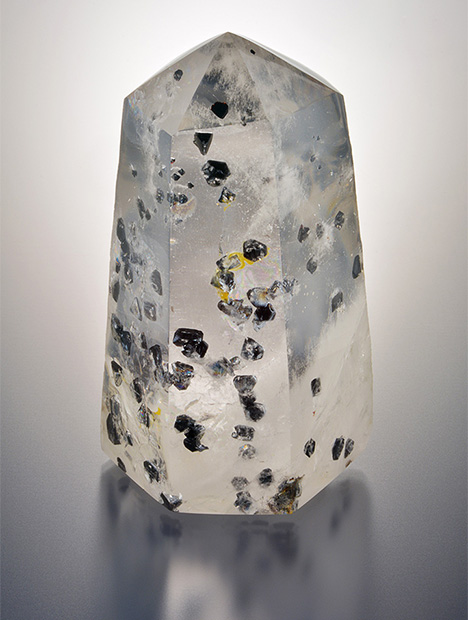Quarterly Crystal: Wurtzite Phantom in Quartz

Transparent colorless rock crystal quartz is a strong, durable mineral that makes a favorable host for a wide variety of inclusions (see the three-volume Photoatlas of Inclusions in Gemstones for examples). The geographic source of the crystal pictured in figure 1 is British Columbia, Canada. At 1,140 ct and 86.38 mm in length, this large example of rock crystal plays host to several near-surface opaque black hexagonal to trigonal crystals as large as 5.0 mm.
As shown in figure 2, the micromorphology of the numerous inclusions, forming a three-sided phantom, suggests that they might be the zinc iron sulfide wurtzite. Laser Raman microspectrometry confirmed the identification of the inclusions as wurtzite. The euhedral inclusions were situated in the quartz crystal in the form of directional phantoms that developed through the directional deposition of the wurtzite on three consecutive surfaces of the quartz, which then continued to grow, enveloping the wurtzite as inclusion planes tracing the form of the original quartz host. From what we can determine, this is the first time that wurtzite has been found as an inclusion in any gem material. Because of wurtzite’s relationship to sphalerite, some inclusions previously identified as sphalerite may actually be wurtzite.




